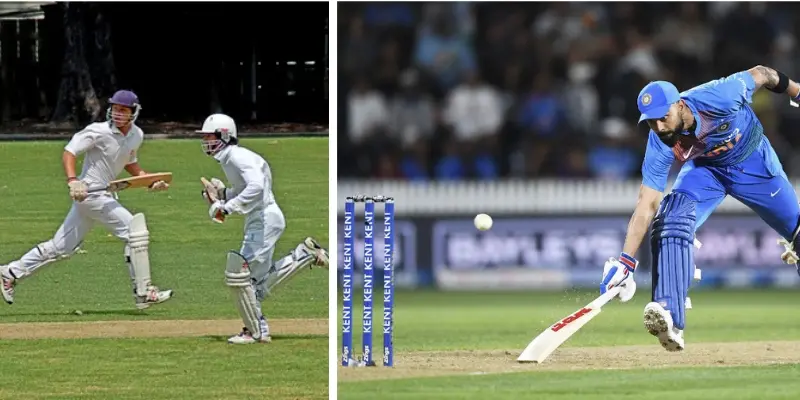Scoring Of Cricket Explained | This Ultimate Guide Will Help You Understand Everything
Published: 31 Jan 2025
If you are a new cricket fan, you must be wondering about how scoring of cricket match works. Of course, there can be no interest in watching a match if you don’t understand its system of scoring runs.
Don’t worry! In this guide, you will find the cricket scoring system explained in easy and understandable way so you can follow and enjoy every match.
Whether it’s a thrilling six or a quick single, every run counts! And did you know that the highest team score in cricket is 498/4? Do you know that it’s a huge one or a normal score? Let’s find out how scoring works in cricket.

Basics of Cricket Scoring
The main way to score in cricket is by making runs. Here’s how it happens:
Hitting the Ball And Running Between the Wickets
- Hitting the Ball and Running: When a batter hits the ball, they run to the other end of the pitch. Each time they cross, and reach the crease of the other end, they score 1 run.
- 1 run – The batters cross once.
- 2 or 3 or more runs – If they run multiple times before the fielder throws the ball back. The many times they cross the runs are scored usually up to 3, rarely up to 4.
- Boundaries:
- 4 Runs: After playing a short If the ball touches the ground and touches or crosses the boundary fence, it’s 4 runs.
- 6 Runs: If the batter hits the ball over the boundary without touching the ground, it’s 6 runs.
- Example: Think of Rohit Sharma hitting a six—it’s always exciting to watch!
Other Ways to Score Runs
Sometimes, the batting team gets runs without the batsman hitting the ball. These runs are called extras.
How do the extras scored:
- No-balls: If the bowler breaks a rule, like overstepping the line, or bowling higher than the allowed height, the batting team gets 1 run. The batsman also gets a free hit in limited-overs cricket!
- Wides: If the bowler bowls too far from the batsman, it’s a wide ball, and the batting team gets 1 extra run for that.
- Byes and Leg-byes: If the ball misses the bat but the batsmen still run, they score byes or leg-byes.
- Overthrows: If fielders make a mistake, like throwing the ball wildly, the batsmen can score extra runs.
- Example: A fielder throws the ball and the receiver misses the ball, and the batsmen can run more runs.
How Scores Are Tracked
The scoreboard shows important information:
- Total Runs: The total number of runs scored by the batting team.
- Wickets: The number of batters out of the batting side.
- Overs: The number of overs bowled by the bowling side (1 over = 6 legal balls).
- Example: If the score is 150/3 in 20 overs, it means the batting team scored 150 runs, lost 3 wickets, and 20 overs have been bowled by the bowling side.
- Partnerships: This is the number of runs scored by two batsmen together.
- Example: Virat Kohli and KL Rahul once scored 200 runs together—what a great partnership!
Special Scoring Terms
Cricket has some fun terms for scoring:
- Century: When a batsman scores 100 runs, (Sachin Tendulkar has scored a century of centuries).
- Half-century: When a batsman scores 50 runs.
- Duck: When a batsman gets out without scoring any runs.
- Example: If a batter gets out for 0, it’s called a “duck.” if a batter gets out on the very first ball he faces it’s called a “golden duck”
Tips for Understanding Scores
Here are some easy ways to get better at understanding cricket scores:
- Watch live matches and keep an eye on the scoreboard.
- Practice calculating runs while watching games.
Final Thoughts
Scoring of Cricket is all about runs, boundaries, and extras. Once you understand these basics, watching cricket becomes even more fun! So, the next time you see a batsman hit a six or a fielder save a boundary, you’ll know exactly what’s going on in the ground.

- Be Respectful
- Stay Relevant
- Stay Positive
- True Feedback
- Encourage Discussion
- Avoid Spamming
- No Fake News
- Don't Copy-Paste
- No Personal Attacks

- Be Respectful
- Stay Relevant
- Stay Positive
- True Feedback
- Encourage Discussion
- Avoid Spamming
- No Fake News
- Don't Copy-Paste
- No Personal Attacks





